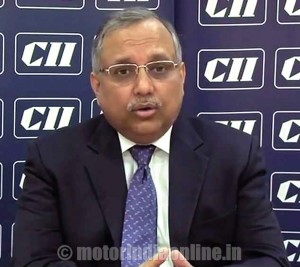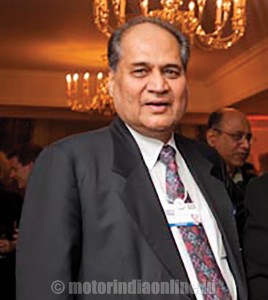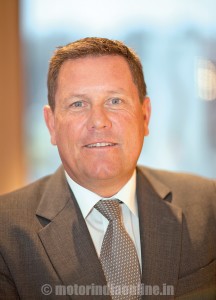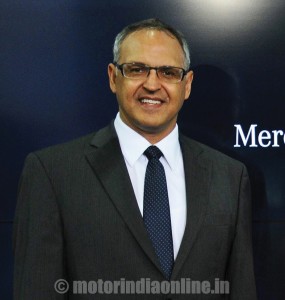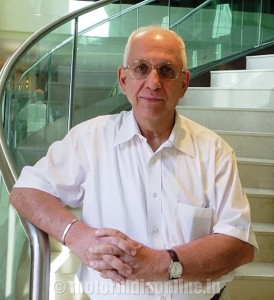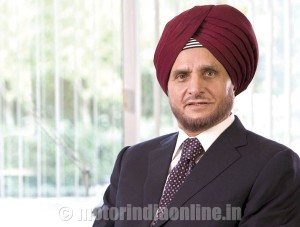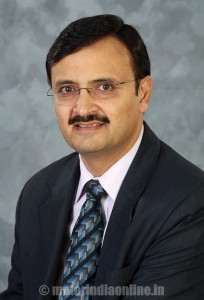SIAM hails FAME scheme to promote electric, hybrid mobility
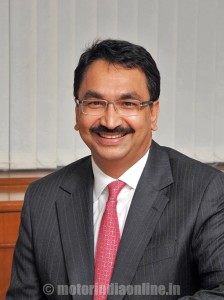
Mr. Vikram Kirloskar, President, Society of Indian Automobile Manufacturers (SIAM), has welcomed the Union Budget 2015 and termed it as ‘forward looking’ and addressing both the social sector and the industry in an “inclusive fashion”.
Concessional customs and excise duties on select parts used in the manufacture of electric & hybrid vehicles have been extended for a year. This is a positive move. The Finance Minister deserves special praise for having accorded approval to the Scheme on Faster Adoption of Electric and Electric Mobility (FAME). Although the initial allocation of Rs. 75 crores is very modest, the industry hopes that over the next few months, more resources would be allocated for promoting this new and green technology area which can be a game-changer for the automotive industry.
SIAM had earlier sought a rise in the customs duty on commercial vehicles from 10 per cent to 40 per cent. The effective rates have now been increased to 20 per cent, which is a welcome change. The reduction in excise duty on the chassis of ambulances from 24 per cent to 12.5 per cent is also a positive step.
Mr. Kirloskar further says that the Budget has focused on the overall development of the society and has brought in several reforms to ensure an improvement in the consumer sentiment as well as disposable incomes which would benefit the automobile industry a lot. A reaffirmation of the date of implementation of GST from April 2016 would help manufacturers formulate more concrete long-term plans for products and investments. The reduction in the corporate tax from 30 per cent to 25 per cent over the next four years lays down a clear roadmap that removes the uncertainties facing the industry in general.
The Budget lays huge emphasis on infrastructure development throughout the country, which would boost the prospects of a wide range of industries, including automobiles, particularly the commercial vehicles industry. A strong focus on rural development, including substantial allocation under MNREGA, would also ensure improved demand from non-urban centers. This is most beneficial for the auto industry.
Mr. Kirloskar is of the view that the forthcoming Budgets would hopefully emphasize renewal of fleets through fiscal incentives. Fleet renewal would help both the industry and the society in terms of environment, health, etc.
Excise duty has been rationalized and increased to 12.5 per cent after subsuming education and higher education cess. The industry would have liked to do away with NCCD, which too can be looked into the next Budget.
According to the SIAM chief, overall the Budget looks to bring in systemic changes which are important in the overall second generation reform process. However, the Budget should have provided more purchasing power in the hands of the consumers through various measures to improve the overall market scenario and boost consumer demand.
ACMA welcomes thrust on auto component sector growth
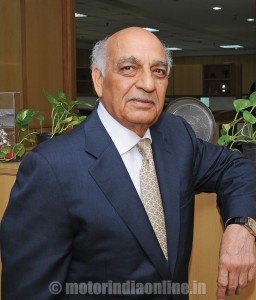
The Automotive Component Manufacturers Association of India (ACMA) has welcomed the thrust given in the Union Budget 2015 towards kick-starting the national economic growth and making it inclusive. The special focus on infrastructure development, including roads and power, education, skilling, infrastructure development, ease of doing business and attracting investments deserves special praise. Also appreciated are the measures for sustaining growth and scaling-up of the MSME sector.
Congratulating the Finance Minister, Mr. Arun Jaitley, on his presentation of a growth-oriented Budget, Mr. Ramesh Suri, ACMA President, said: “We are glad that the Finance Minister has unveiled a pragmatic Budget with adequate focus on development of the social sector as well as that of the industry and infrastructure. ACMA also welcomes the announcement of the intent for implementation of GST by next fiscal, as well as measures to encourage MSMEs. The establishment of an electronic Trade Receivables Discounting System (TReDS) for financing of trade receivables of MSMEs would help improve the liquidity in the sector. MSMEs constitute over 70% of ACMA’s membership, and scaling-up has been a challenge for the sector”.
Mr. Suri added that, apart from various measures to attract investments, allowing 20 per cent additional depreciation on new plant and machinery as against 10 per cent, if the asset was installed after September 30 of the financial year, is indeed a favorable outcome of the Budget. Further, reduction in the rate of income-tax on royalty and fees for technical service from 25 per cent to 10 per cent will enable technology absorption in the auto component sector.
The Budget has also announced enhancement of the time-limit for taking CENVAT credit on inputs and services from six months to one year. Further, permitting Central excise/service tax assesses to issue digitally-signed invoices and maintain records electronically will facilitate business expansion, added Mr. Ramesh Suri.
Balanced Budget with focus on infrastructure: FADA President
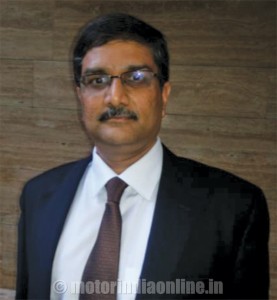
The Union Minister has presented a balanced Budget with special emphasis on infrastructure development and ‘Make in India’ program. The higher allocation for infrastructure & rural development and emphasis on ‘Make in India’ will put the economy on a high growth trajectory, thereby fuelling the auto market growth.
In a press release, Mr. KVS Prakash Rao, FADA President, has said that a welcome announcement in the Budget is the assurance that GST will be introduced on April 1, 2016.
The auto market in India has been reeling under acute slowdown for the last three years. FADA is expecting further special measures, including a softer excise duty regime and high depreciation rates for motor vehicles, for giving a boost to the auto sector. It is also hoped that the Finance Minister will consider incorporating lower excise duty and higher depreciation rates in respect of motor vehicles before the Budget is finally passed by Parliament.
Mr. Chandrajit Banerjee, CII Director-General, has observed: “The Budget 2015-16 meets the present requirements of the Indian economy and outlines a comprehensive vision for citizens with strong focus on growth, investment, job creation and social security. A forward-looking, counter-cyclical and pragmatic document, the Budget reassures investors and builds consumer confidence.
CII is further encouraged by the GDP growth target of 8-8.5 per cent for 2015-16 and fiscal consolidation at 3.9 per cent of GDP. The Budget would strengthen the investment cycle and build the savings pipeline while also channelising funds into the much-needed infrastructure sector.
Mr. Rahul Bajaj, Past CII President, and Chairman, Bajaj Auto Ltd.: This has been one of the best Budgets in the recent past. Keeping in mind fiscal and other constraints, it has done whatever a budget can do to promote savings, investment and hence growth. Fiscal deficit for 2014-15 has been maintained at 4.1 per cent of GDP, and, for even 2015-16, it has been kept at 3.9 per cent only, slightly higher than the 3.6 per cent of the GDP which had been thought of.
The Finance Minister has promised to bring down the deficit to three per cent within three years. The current account deficit for the current year is expected to be below 1.3 per cent of the GDP, but for this he has to thank reduced oil and other commodity prices.
What is especially important is the Finance Minister’s proposal to enact a comprehensive new law of black money with penalty for tax evasion. Not only will illegal assets abroad be seized, but such citizens could go to jail for up to 10 years. He has postponed applicability of GAAR to April 1, 2017, and it will apply prospectively. He has also replaced wealth tax by an additional two per cent surcharge on incomes of over Rs. 1 crore.
Though some may consider this a pro-corporate Budget, in reality it is a Budget for growth, savings, industrial development and for the middle class.
Mr. Anders Grundströmer, Managing Director, Scania India, and Senior Vice President, Scania Group: This is a balanced Budget with emphasis on manufacturing as part of the Government’s ‘Make in India’ campaign with appropriate importance to skilling. We also like the Government commitment to make the development process as environment-friendly as possible.
While the increase in customs duty for commercial vehicles is disappointing, overall, the positives far outweigh the negatives. The clear commitment to implement GST by April 1, 2016, easing of the norms to aid flow of technology, flow of capital, and focus on sustainable development, along with a road map of clearly-stated goals in terms of one lakh km of roads, doubling the clean energy cess on use of coal and the launch of a scheme for faster adoption are all measures in the right direction.
However, more clarity around the country’s biofuel agenda and sustainable solutions in the transport sector is needed. Bio-ethanol promises carbon savings of about 70 per cent.
Overall, the broad contours are all positive, and we look forward to partnering with India on this exciting journey.
Mr. Eberhard Kern, Managing Director and CEO, Mercedes-Benz India: The commitment to infrastructure, announcement of GST with a specific timeline and a simplified tax structure greatly enhance the ease of doing business in India. These positive steps will simulate growth and should indirectly help the automotive market. It is crucial now that these measures are implemented within the next 12-18 months to achieve the desired results.
Mr. Farrokh Cooper, Chairman & Managing Director, Cooper Corporation Pvt. Ltd.: The Budget is an extremely positive one. A roadmap to simplify processes, and encourage growth was critically needed, and the several measures proposed in the Budget will stimulate growth and revive the economy. The corporate tax reduction will definitively promote growth.
Mr. Onkar S. Kanwar, Chairman, Apollo Tyres Ltd.: This is a truly reformist Budget and I’m most heartened to see that the Finance Minister has set a solid roadmap for the Indian economy. There are big changes for business as expected, and the most awaited reform, that of GST, has been finally announced. This is bound to reinvigorate industry and will positively make manufacturing more competitive. The GST, by subsuming a large number of Central and State taxes into a single tax, will help establish what we need – a common national market.
The additional focus on roads and rail infrastructure, alongwith an increased spend of Rs. 70,000 crores, will also prove to be beneficial for the economy as well as the tyre industry. The further reduction in corporate tax from 30 per cent to 25 per cent in four years is also a huge positive step, as it will provide yet another fillip to the ‘Make in India’ campaign.
Mr. Shishir Joshipura, Managing Director, SKF India Ltd.: “With this ’high on governance’ Budget, the Government has moved away from sectoral SOPs completely and has focused on critical macro points such as transparency, ease of doing business and social welfare. Steps taken towards creating a transparent model of governance and project clearances, setting a direction for GAAR, is a clear and positive message to investors towards ease of doing business.
The roadmap for reducing corporate tax is a welcome move that will drive investments. Infrastructure, an important sector, has got a positive impetus.
The Budget has got something for everyone, focussing on issues which aim to drive sustainable and inclusive growth in a true sense.
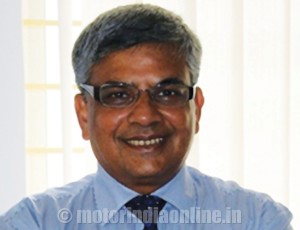 Mr. Kamal Bali, Managing Director, Volvo India Pvt. Ltd.: Overall, it is a progressive, balanced and an inclusive Budget aimed at addressing the social fabric of the country. It is imaginative in as much as it touches upon and addresses almost every segment and sector of the economy, especially the vulnerable ones.
Mr. Kamal Bali, Managing Director, Volvo India Pvt. Ltd.: Overall, it is a progressive, balanced and an inclusive Budget aimed at addressing the social fabric of the country. It is imaginative in as much as it touches upon and addresses almost every segment and sector of the economy, especially the vulnerable ones.
There is a clear focus and greater public spend on infrastructure, which was the need of the hour, especially to kick-start the stalled projects. This will fuel growth, bring in private investment and get India back on a sustained economic growth trajectory. It also aims to bring in more disposable income in the hands of the common man.
